HANK PHILLIPPI RYAN: Craig Johnson tells the story about how the biggest lie in fiction is that disclaimer in the front of the book that says: "This is a work of fiction. All characters, locations and events portrayed in this novel are products of the author's imagination....." Something like that. You've seen it.
Well, sure they are. Products of our imaginations. But as the incredibly talented Cate Holahan says the author's imagination gets fueled by reality. So what's real--and what's made up?
This, as I would soon learn,
was dangerous.
"Watch your step and stay
close behind.” Our Icelandic mountain guide shouted over his shoulder at me and
my fellow travelers. His name was Helgy, and he nearly matched my pre-conceived
picture of an Icelandic wilderness guide. Tall. Tow-head. A modern-day Viking complete
with broad shoulders propping up a water-proof, Gore-tex jacket. Only the beard
that I’d imagined would cover the face of any proper Norse descendant was missing.
Helgy halted at a ridge and
motioned for the stragglers to join him. He pointed below. “It’s twice the
boiling point. Maybe more.”
 I peered down at the milky
pool steaming in the crater inches from Helgy’s feet, fighting my insane desire
to strip down to my bathing suit. The water beckoned, a private blue lagoon for
the five people in our hiking party. An escape from the island’s frigid summer
air.
I peered down at the milky
pool steaming in the crater inches from Helgy’s feet, fighting my insane desire
to strip down to my bathing suit. The water beckoned, a private blue lagoon for
the five people in our hiking party. An escape from the island’s frigid summer
air.
“I want to get in,” a friend
said, echoing my thoughts.
“Well, you’d never get out.” Helgy’s smile dropped
into a serious line that made up for the lack of beard. “It would melt off your
legs and then, since there is nothing to hold on to, you’d sink below and
disappear.”
I looked from the bubbling
pool to admire the bucolic landscape boiling before us. “Wow,” I said. “There
are so many ways to get rid of a body up here.”
And, just like that, I had a
story idea. Later that night, in the safety of my hotel room, I sketched out an
entire novel.
I retell this vacation
anecdote because it touches upon the theme of my latest thriller, Lies She Told (Crooked Lane Books.
Sept. 12, 2017). Where do writers get their ideas? How do they twist the truth
to create fiction? Where are the lines beneath the lies?
 Lies She Told concerns a suspense writer, Liza, whose
work-in-progress novel points at clues to a disappearance in her real life. The
story alternates between Liza and the tale of Beth, her novel’s protagonist. After
a body is found, the lines between Liza’s real life and her fiction begin to
blur, forcing Liza to question the origins of her ideas. Has she subconsciously
picked up on details about the people closest to her that could reveal a
killer? How much of her art is an abstraction from her actual life? What is her
fiction showing about her latent desires, suspicions, and frustrations?
Lies She Told concerns a suspense writer, Liza, whose
work-in-progress novel points at clues to a disappearance in her real life. The
story alternates between Liza and the tale of Beth, her novel’s protagonist. After
a body is found, the lines between Liza’s real life and her fiction begin to
blur, forcing Liza to question the origins of her ideas. Has she subconsciously
picked up on details about the people closest to her that could reveal a
killer? How much of her art is an abstraction from her actual life? What is her
fiction showing about her latent desires, suspicions, and frustrations?
Whenever I write, I ask
myself these same questions. My characters, I know, are amalgamations of people
in my real life, fictional folks in admired novels, and myself. As my
protagonist says in Lies She Told, “to be a writer is to be a life thief.
Everyday, I rob myself blind.”
When writing, I continually wonder where I am
drawing the line and whether I am crossing boundaries that I shouldn’t.
Good fiction must have deep
characters that are more than fractions of their creator. My people have to
come from me without being boring, old me—or my lovely, but far-too-functional
for thrillers, friends.
I evaluate my characters against what I believe to have
inspired them, constantly checking whether I have abstracted enough. Is this
character too recognizable as my best friend from high school or have I stolen
her speech patterns but actually based the personality on someone/thing else?
Is a character reacting the way I imagine that I would in a similar scenario or
is she being true to her backstory and responding in a way that is organic to
how her was raised? Are my characters actions naturally leading to plot
elements or am I orchestrating from on high, forcing plot points and the story
I want to tell instead of the tale that would flow from my fictional people?
I think all writers must do a
similar kind of analysis to make sure that they are telling a rich story with
varied characters that act in accordance with their invented histories. Just
because I am writing the story doesn’t mean I get to control it. My book’s
protagonist, Liza, certainly doesn’t.
HANK: Authors, how do you handle real-life characters who try to get into your books? Readers, do you think authors are making people up--or stealing from real life?
Cate Holahan is
the USA Today Bestselling author of The Widower's Wife (Crooked
Lane Books, Aug. 2016) named to Kirkus' Best Books of 2016. Her third suspense
thriller, Lies She Told (Crooked Lane Books, Sept. 12, 2017) was a September
pick by Book of the Month Club. In a former life, she was an
award-winning journalist that wrote for The Record, The Boston Globe, and
BusinessWeek. She lives in NJ with her husband, two daughters, and
food-obsessed dog, and spends a disturbing amount of time
highly-caffeinated, mining her own anxieties for material.
LIES SHE TOLD: The truth can be darker than fiction. Liza Cole, a once-successful novelist whose career has seen better days, has one month to write the thriller that could land her back on the bestseller list. Meanwhile, she’s struggling to start a family, but her husband is distracted by the disappearance of his best friend, Nick. As stresses weigh her down in her professional and personal lives, Liza escapes into writing the chilling exploits of her latest heroine, Beth.
Beth, a new mother, suspects her husband is cheating on her while she’s home caring for their newborn. Angry and betrayed, she aims to catch him in the act and make him pay for shattering the illusion of their perfect life. But before she realizes what she’s doing, she’s tossing the body of her husband’s mistress into the East River.
Then, the lines between Liza’s fiction and her reality eerily blur. Nick’s body is dragged from the East River, and Liza’s husband is arrested for his murder. Before her deadline is up, Liza will have to face up to the truths about the people around her, including her own. If she doesn’t, the end of her heroine’s story could be the end of her own.







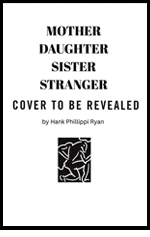
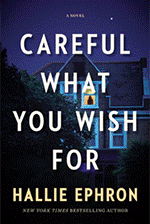
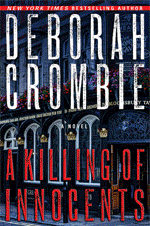
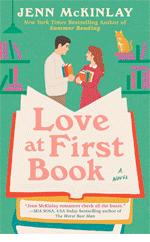
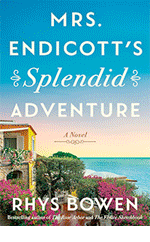

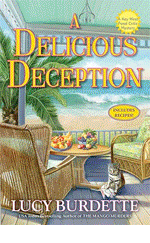
Cate, congratulations on your new book. It sounds quite intriguing and I’m looking forward to reading it . . . .
ReplyDeleteI’m not certain that authors are necessarily stealing from real life to create people, but I think that their characters are an amalgam of made up and influence [unintended or deliberate] of people they’ve met or seen in real life. And isn’t this combination of fiction and real what makes their characters so relatable to their readers?
Exactly! Or when you read a book, and say about a character: "oh, I know someone just like this! I can just picture that…" makes it so realistic.
DeleteAgreed. The people and personalities we encounter are just a jumping off point
DeleteOoh! This sounds good! Very often I see something in the paper or hear elsewhere just a glimmer or a spark of a story that is begging to be told.
ReplyDeleteAnd you know it instantly, right? All the ripples and ramifications are knowably there. Even if you don't know exactly what they are.
DeleteThis sounds SO good. Of course my characters often spark to life, inspired by real people including ME. I try hard to veer off that road. And Cate when we were in IcelandI had the same thought gazing into one of those iridescent blue pools. Did you bathe at the Blue Lagoon?
ReplyDeleteWho did we just hear say all his characters… Or hers? We're a little bit her. It's either you, or not you, kind of you, what you would do or what you wouldn't do. It all comes out of our own experience or through our assessment, because where else would it come from?
DeleteI did go to the Blue Lagoon... also body hiding worthy since you can't see your hands beneath the murky, electric blue water.
DeleteYou can't see your hands? Why?
Deletehe 'lagoon' is vast and the water is milky blue. Chockablock with people standing in it. The color and opacity is something about the volcanic activity and maybe the mud and minerals. Did not make me want to get into it.
DeleteWelcome Cate--what a great story! I'm very envious of your ability to go sketch out the plot for a whole book in one night:). Will you use the Icelandic setting for another book?
ReplyDeleteI definitely steal like mad for my Key West books--people, places, stories. It's so full of juicy nuggets that the urge becomes irresistible. And readers seem to like the crossover between fiction and reality. I think it would be very hard to write something only from my imagination...
Yes, Lucy, but someone like me, unfamiliar with your real life characters, has no idea what's real or not, right? Which makes it even better!
DeleteI'm glad to hear you say that Hank, as sometimes I confuse myself about what's real and what isn't!
DeleteI do exactly the same thing!
DeleteThanks Lucy! I plotted the Iceland story that way but it will probably change once I start writing. They always do once the characters become more vivid. I definitely appreciate the crossover between reality and fiction. It makes the fiction seem more real.
DeleteThe book sounds delicious, Cate! And maybe congratulations are due to Liza, too?
ReplyDeleteI think authors build their stories from all the things they have at hand: recent or historic headlines, stuff they find interesting, people they know, people they imagine they know, people they would like to know, places they've visited, places they wonder about . . . Somehow all that stuff churns around in the deepest part of the back brain and comes out as a story. I know that I have certainly looked at a bad boss or an overly neurotic co-worker and thought, "How would I hide your body?" By body-hiding time, the character is no longer recognizable as the person who gave me the idea, which is probably a mercy.
LOL, Gigi! I'm sure we've all looked at someone and thought that. I think that's one reason so many professors become mystery writers: there is always some administrator, colleague, or student you want to kill in fiction.
DeleteLove this! I don't kill my hideous bosses, but I often make them the bad guys. And the really dumb ones. :-)
DeleteLove that everyone relates. I truly have found my imaginary body hiding tribe here!
DeleteOh, definitely!
DeleteYikes! I'm hooked on the story already! I would think a writer's characters are going to be a blend of make-believe and real life. What you see and experience daily has got to seep in there somewhere when you're making stuff up, aka writing.
ReplyDeleteExactly! And then we fool ourselves into thinking we made it up :-)
DeleteWhen we know we've abstracted more than wholesale invented.
DeleteCongratulations, Cate! I love that I am not alone in being the person in a group who looks at a gorgeous landscape and thinks, "Wow, I could totally hide a body here."
ReplyDeleteI like to think that my characters contain some of my best - and worst - traits. And yes, like Gigi I've looked at people and thought, "How would I kill you and where would I hide the body?" I've only fictionally killed off one person, though.
Mary/Liz
That's kind of creepy, isn't it? Because you know who it really is…
DeleteTrue. In my case, it's someone I don't really see any longer, so that cuts the creep factor WAY down.
DeleteMary/Liz
There is a coffee mug that I have seen somewhere that says: let me have my coffee or you might end up dead...in my next book. I think it should be given out at writers' conferences.
DeleteCate, what a great premise! And I love (although I'm certainly envious) that you plotted the entire book in one night.
ReplyDeleteI'm use I use people that I know, or sort of know, or would like to know, or have read about, as a jumping off point for my characters. But the nice thing about characters is that when you put them into your story and your setting, they very quickly take on a life of their own. That said, I did have a very bizarre conversation with a lady on a bus here in London the other day, and I couldn't stop thinking, "Wow, why hasn't someone killed her?" Who knows, maybe she'll turn up in a book some day!
LOL Debs, are you going to tell us what she said that provoked your reaction?
DeleteI want to know, too!
DeleteTell tell!
DeleteYes. I want to know too!
DeleteCongrats, Cate! I'm blown away that you plotted the book in one night! Amazing!
ReplyDeleteI'm always struck by the fact that if you "borrow" a negative characteristic from a real life person, they never recognize themselves, but everyone thinks they were the inspiration for a likeable character!
Thanks. I definitely took longer to plot Lies She Told. The plotting outline was of a yet to be written book set in Iceland. I am sure the plot will change as I flesh out the characters.
DeleteCate - I love how your mind works! What an intriguing premise for a story to alternate between a writer protagonist and their work. Can't wait to read it!
ReplyDeleteThanks Jenn! I hope you enjoy it.
DeleteI figure everything I write comes from inside my head, so it's all me.
ReplyDeleteThis sounds delicious, Cate!
ReplyDeleteThanks so much Kait!
DeleteIt would never occur to me to ask an author "where do you get your ideas from?" I've always assumed it's a combination of a vivid imagination and finding ways to use aspects of life experiences.
ReplyDeleteAs a reader, I've often had those , "hmm, this would be a good way to kill someone/to hide a body" moments. When a relative asked me "why would you think something like that?" I laughed and said "oh, I probably read too many mysteries!" And she very seriously replied " that's probably true." (So does he think of me as a potential killer or amateur detective?) I'm having the last laugh, though, because in the past ten months I've gotten her hooked on a mystery series!
DebRo
Yes! Everyone should read mysteries!
DeleteInquiring minds must no, what did you get her hooked on? And what does she usually read?
DeleteShe likes history. When she was at my house last November she picked up one of my Maggie Hope books-the first in the series-and read the whole thing, then picked up the next one, took either that or the third one back to NJ with her, and has since purchased all the others in the series! Now I'm trying to get her to read Rhys's books.I can probably get her hooked on them. Pretty soon I hope to have her "main lining" contemporary mysteries, cozies, thrillers, etc! She normally reads non-fiction, especially memoirs.
DeleteDebRo
I just got The Paris Spy, too! But she will LOVE Rhys, too. (Happy Birthday, Rhys!) And give her Shining Through by Susan Isaacs. xoxo
DeleteCongrats on the new book. Plotting a novel in one night makes me a little jealous that something like that would come so easy to anyone.
ReplyDeleteI've toyed with the idea of actually writing a story but nothing ever makes it past the test of "would I want to read this dreck" stage with me.
The best I've done is come up with a name for the lead character and the bare bones idea of an opening scene. Now all I'd need is a story to go with it. You know, the little things...
Regarding the notion of coming up with a way to kill someone or hide a body, a woman I worked with a long time ago asked me about a famous murder case and how they could possibly have missed the body the first time around. So I thought about it and came up with a plausible scenario. Of course, when I told the woman how it could've happened, she was more scared that my mind came up with the idea than she was impressed.
To answer the question, while the characters that authors come up with are their own, they can draw from those they know in real life. But that doesn't necessarily mean that those you draw from are the characters they think they are.
Craig Johnson told the story of how his brother said the character of Lucian in the Longmire mysteries was clearly their dad, but Johnson's mother said his father thought he was actually the Walt Longmire character.